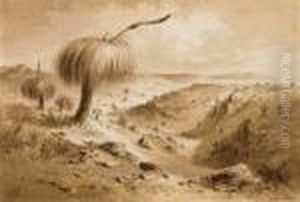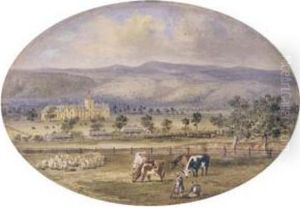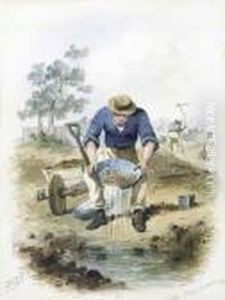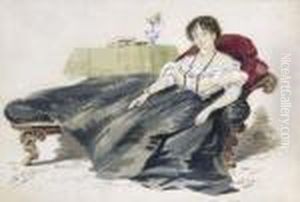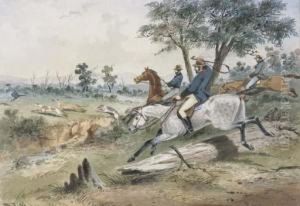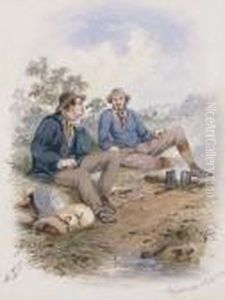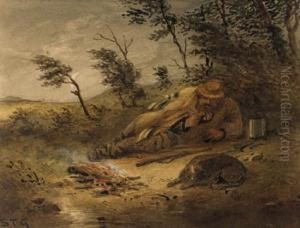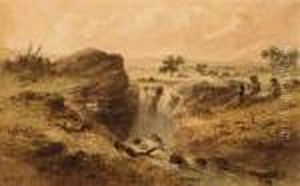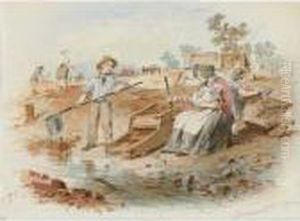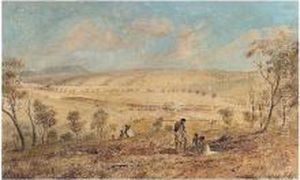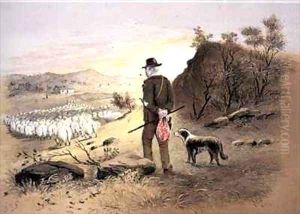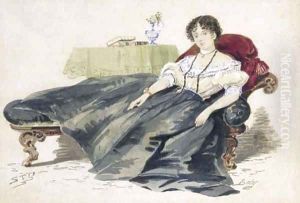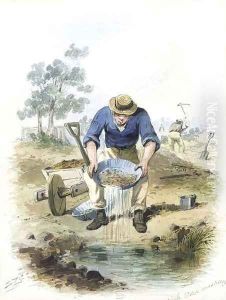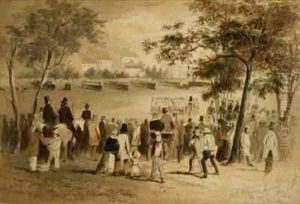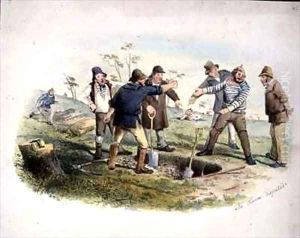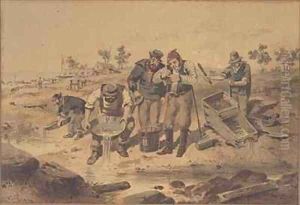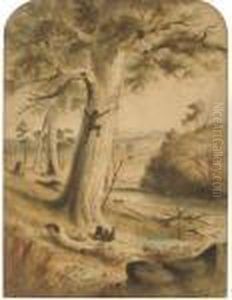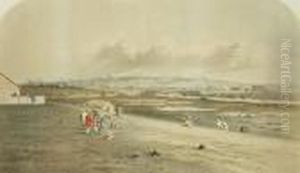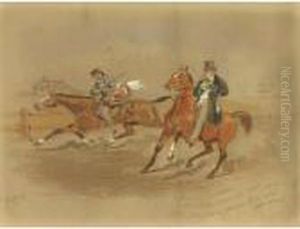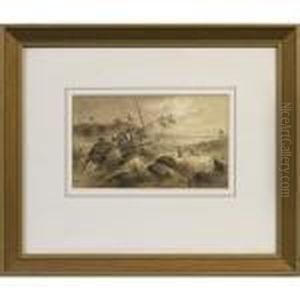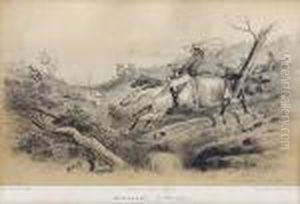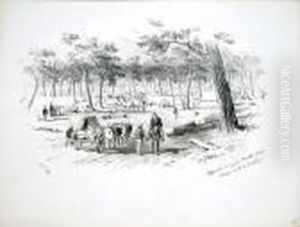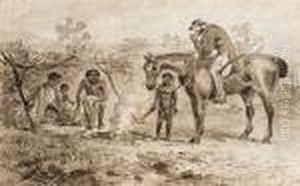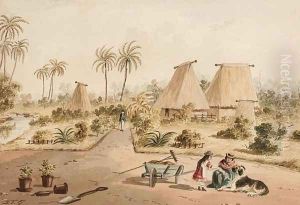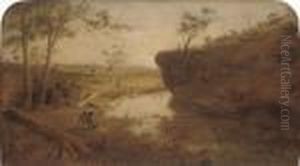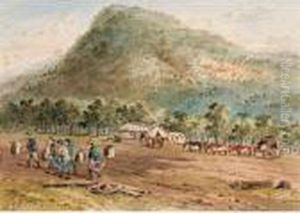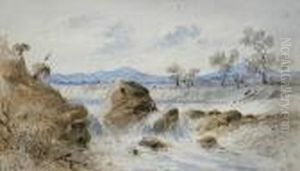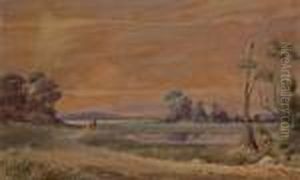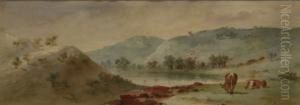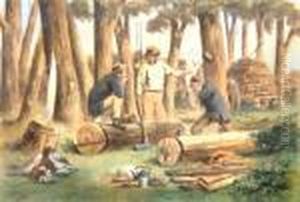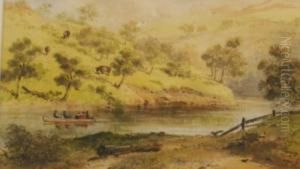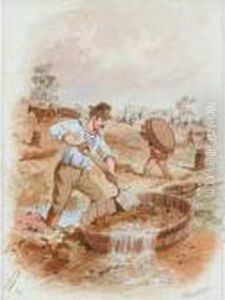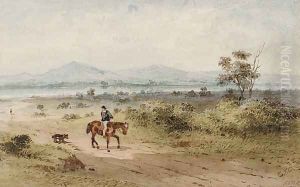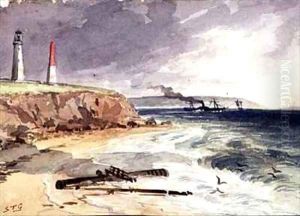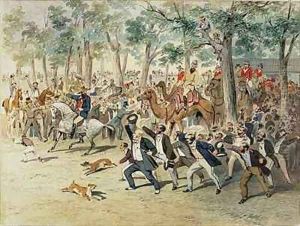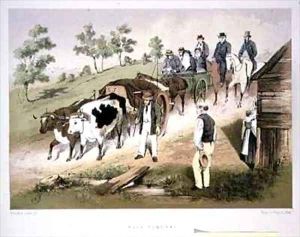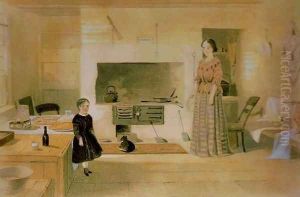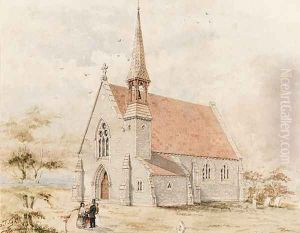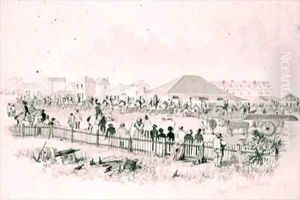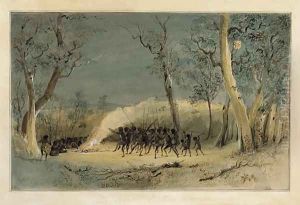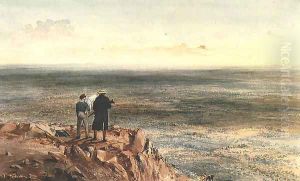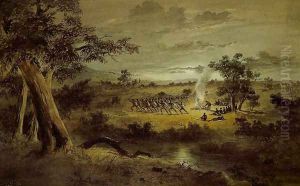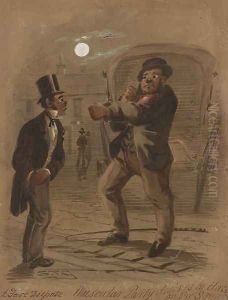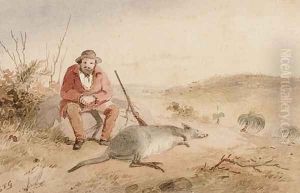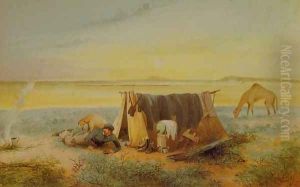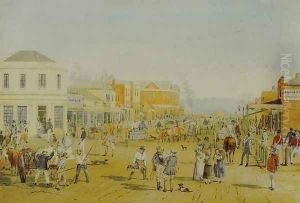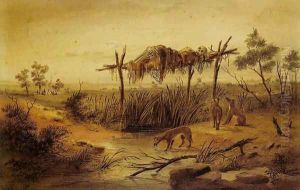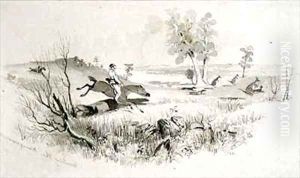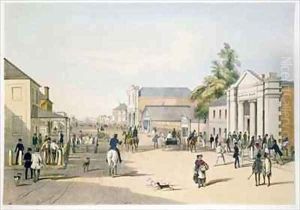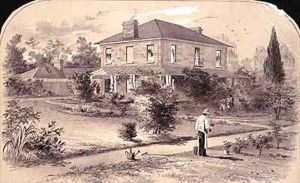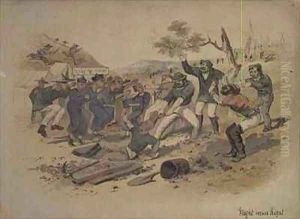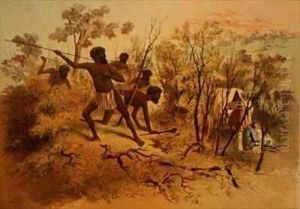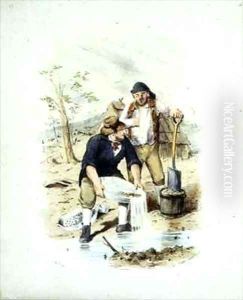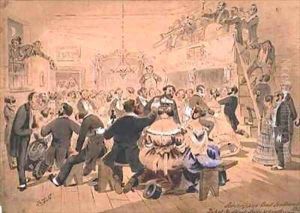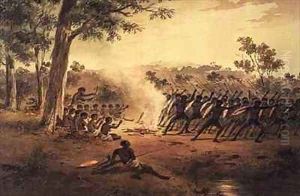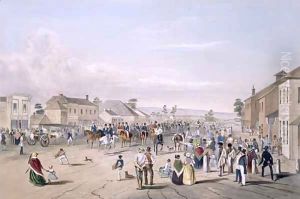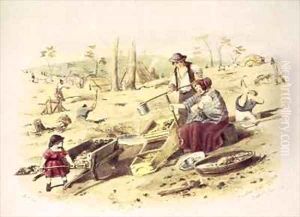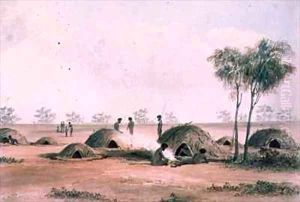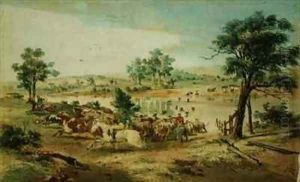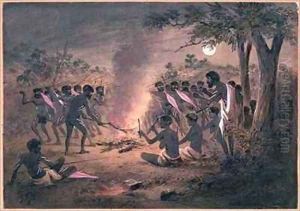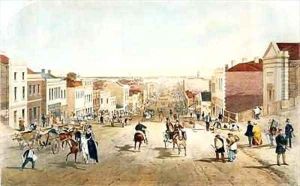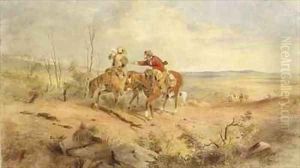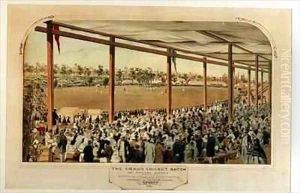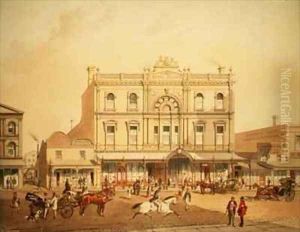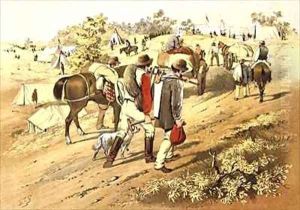Samuel Thomas Gill Paintings
Samuel Thomas Gill, commonly known as S.T. Gill, was an English-born Australian artist. Born on May 21, 1818, in Perranarworthal, Cornwall, England, Gill was the eldest son of Rev. Samuel Gill, a Baptist minister, and his wife Isabella. He was educated at Plymouth Grammar School, where he displayed a talent for drawing and painting from an early age.
In 1839, Gill emigrated to Australia with his family, where his father had been appointed a Congregational minister. They settled in Adelaide, South Australia, which was a burgeoning colony at the time. Gill quickly became involved in the local art scene and started working as a draftsman and illustrator. His early works included illustrations for newspapers and sketching the rapidly changing landscape of the Adelaide region.
Gill's reputation grew when he accompanied explorer John Horrocks on an expedition to the north of South Australia in 1846. His sketches from this journey were highly regarded for their accuracy and detail, offering a unique visual record of the expedition. He later published a series of lithographs titled 'The Horrocks Expedition'.
However, it was the Victorian gold rush in the 1850s that significantly influenced Gill's career. He moved to Victoria and began capturing the daily life of the goldfields in his work. His images of diggers, bushrangers, and the bustling activity of the gold rush era were widely popular and remain some of the most iconic representations of that period in Australian history.
Gill was known for his ability to capture the essence of the Australian landscape and the spirit of its people. His sketches and watercolors are characterized by fine detail, a keen sense of observation, and a touch of humor. Despite his success, Gill struggled financially throughout his life and was known to barter his artwork for necessities.
In the later years of his life, Gill's popularity waned, and he faced increasing poverty. He lived a nomadic lifestyle, moving between Melbourne, Sydney, and Adelaide, and continued to produce artwork, although he received little recognition at the time. Samuel Thomas Gill died on October 27, 1880, in Melbourne, destitute and largely forgotten.
Today, S.T. Gill is celebrated as one of Australia's most important colonial artists. His work is held in high esteem for its historical and cultural significance, providing a window into Australia's past. His paintings and sketches are featured in many major Australian galleries and museums, and his legacy is that of a key figure in the visual documentation of Australia's early colonial history.
